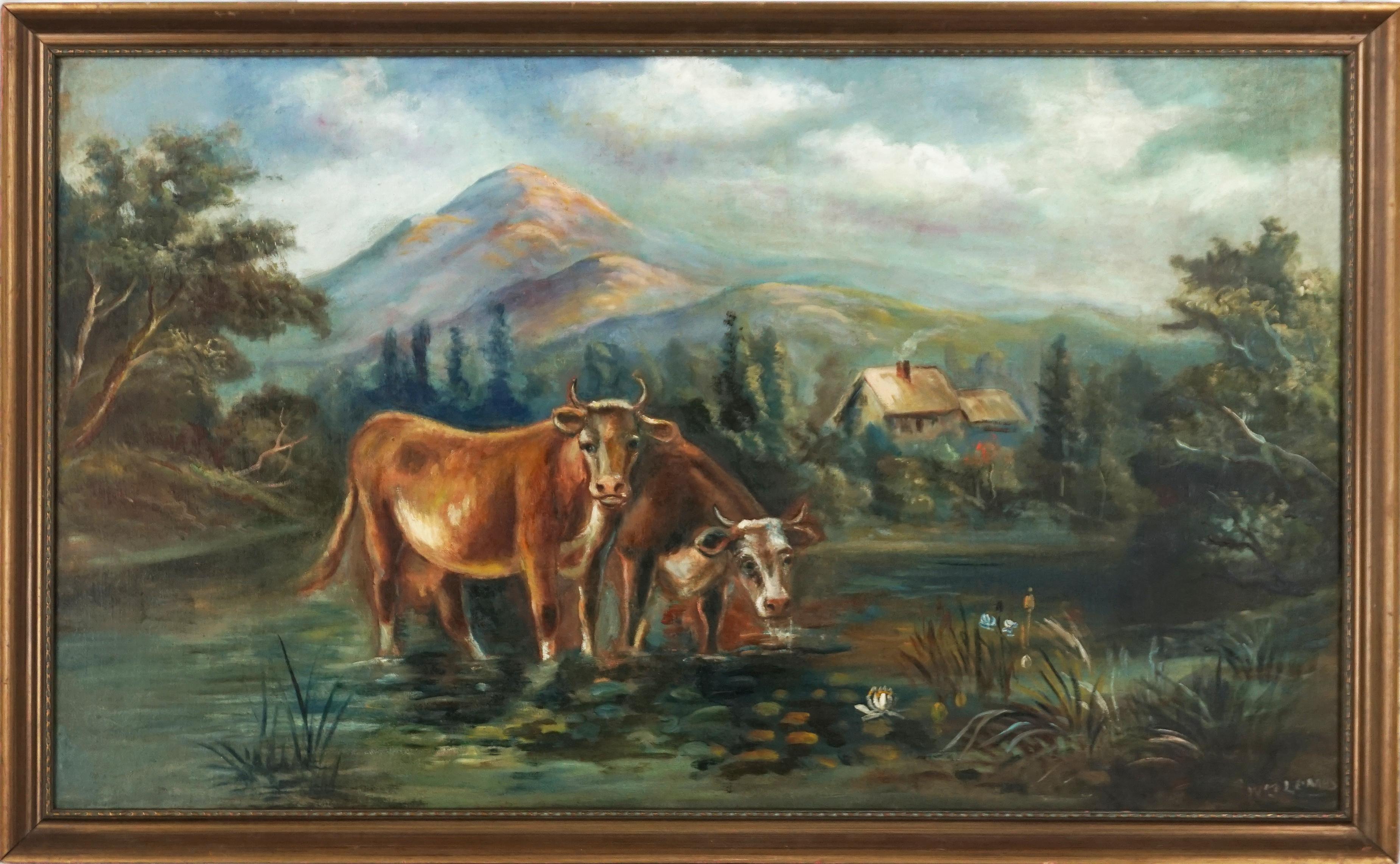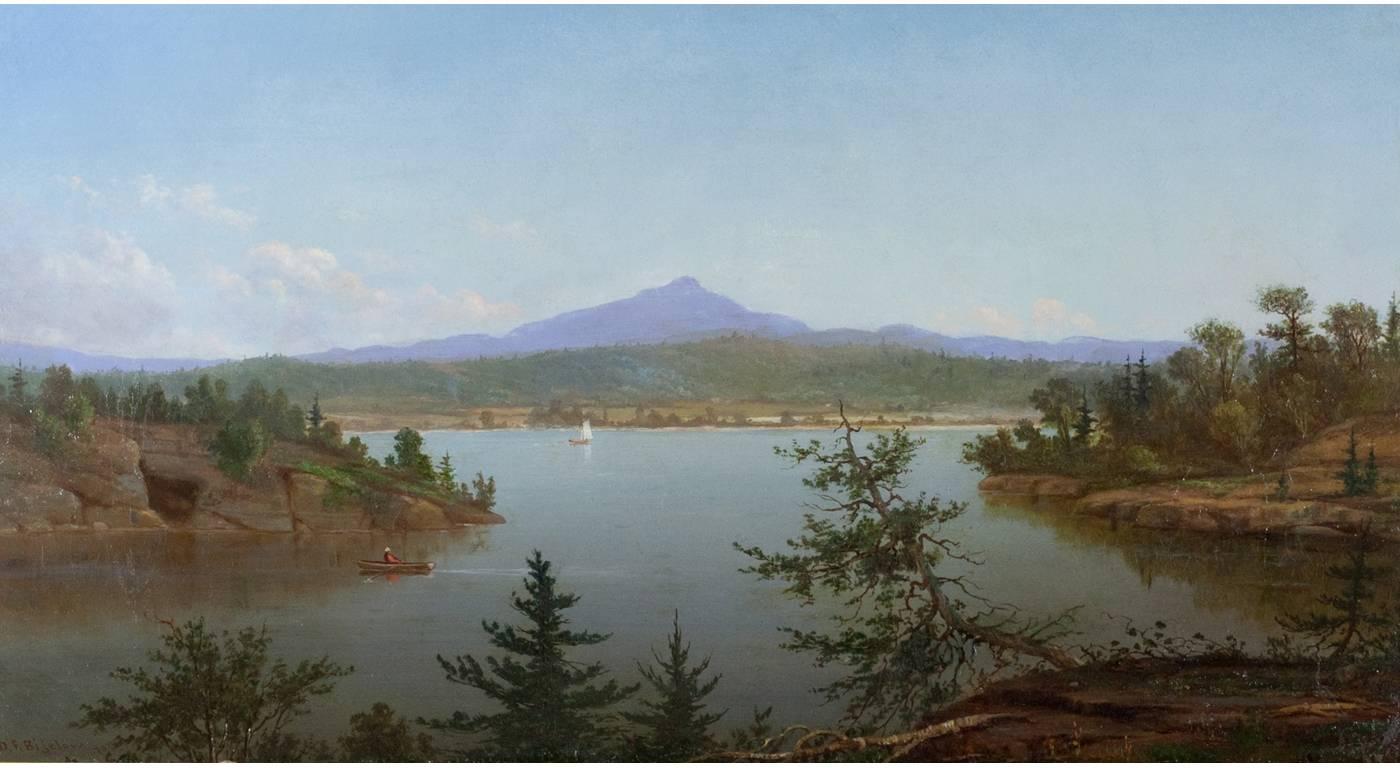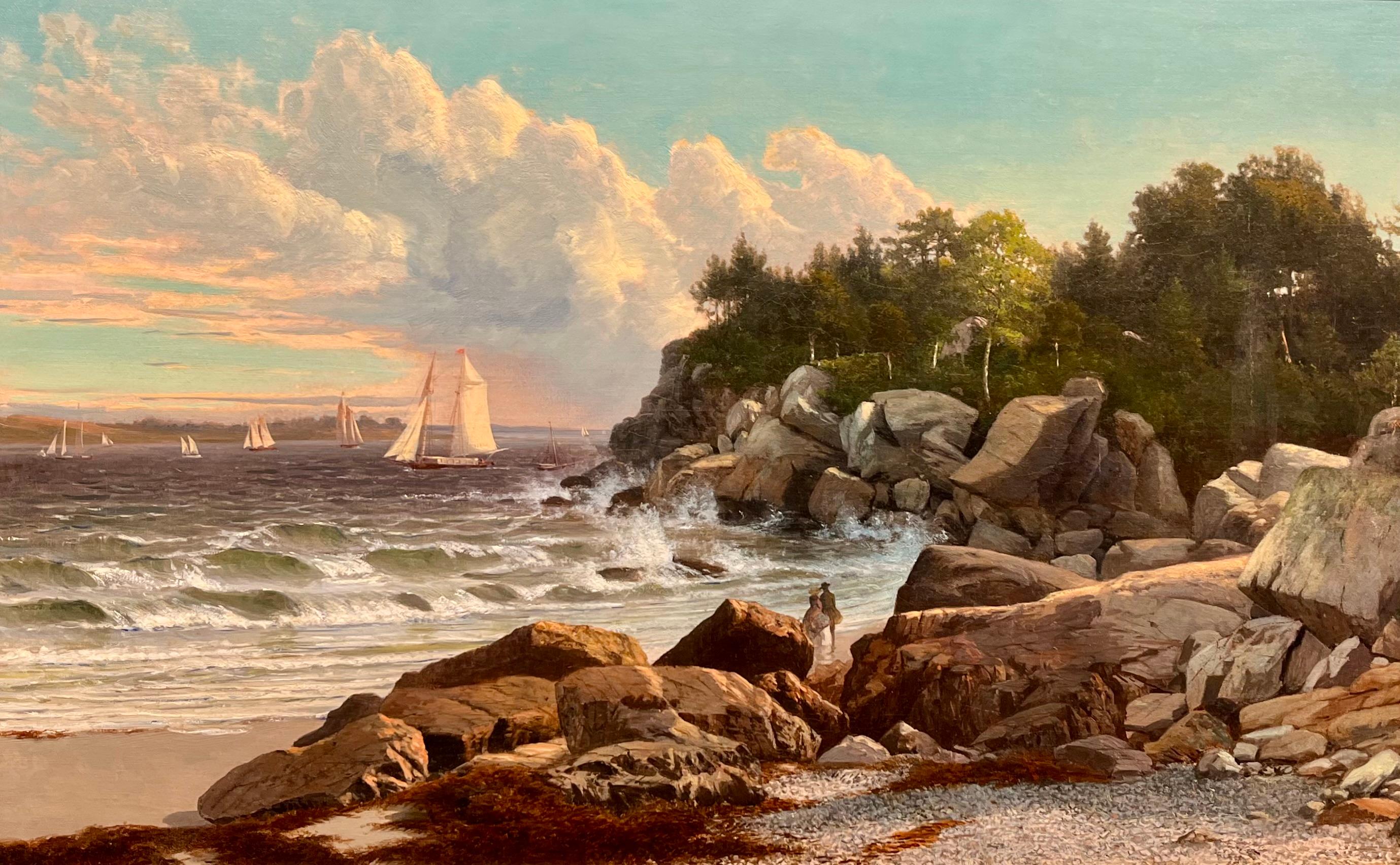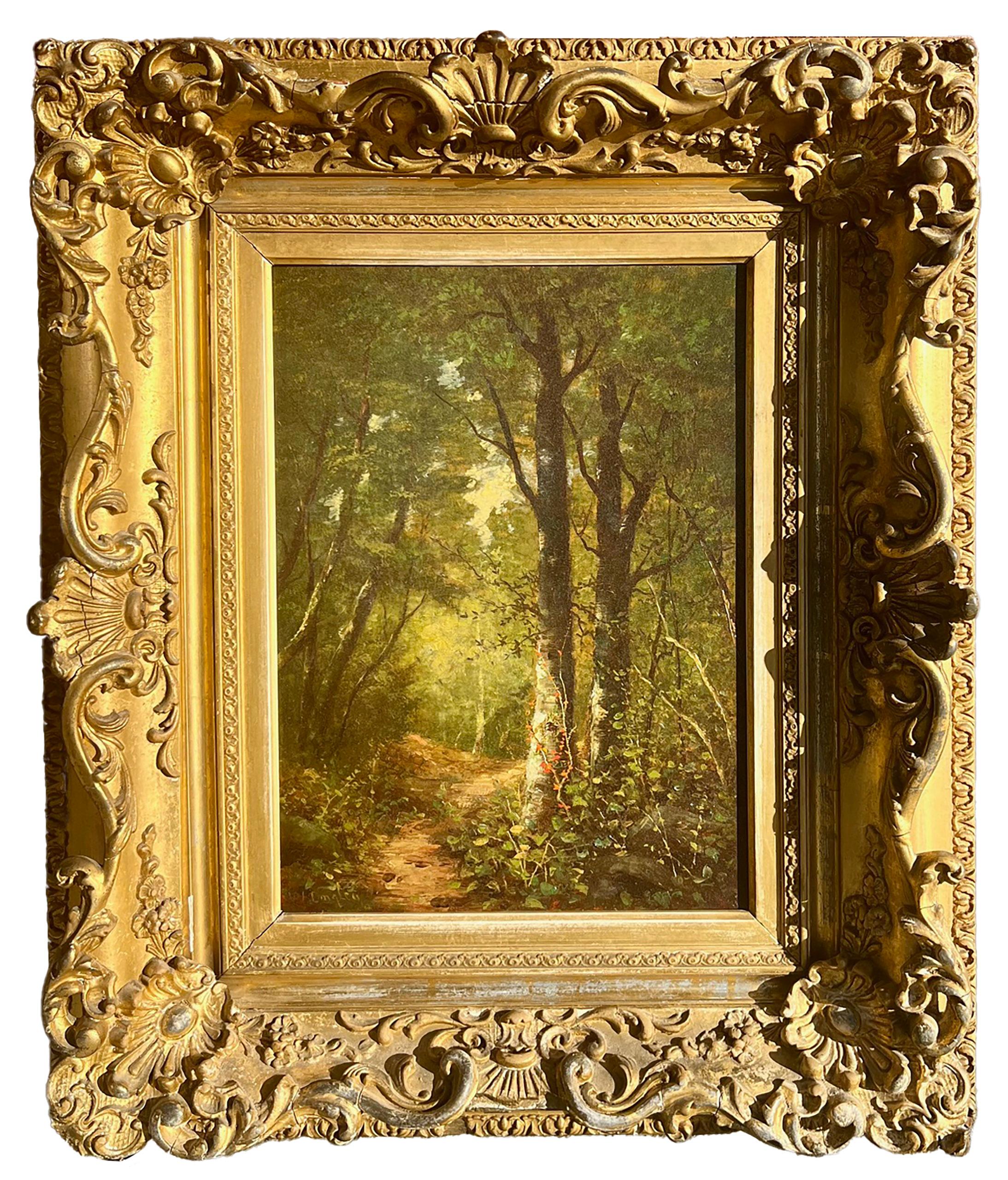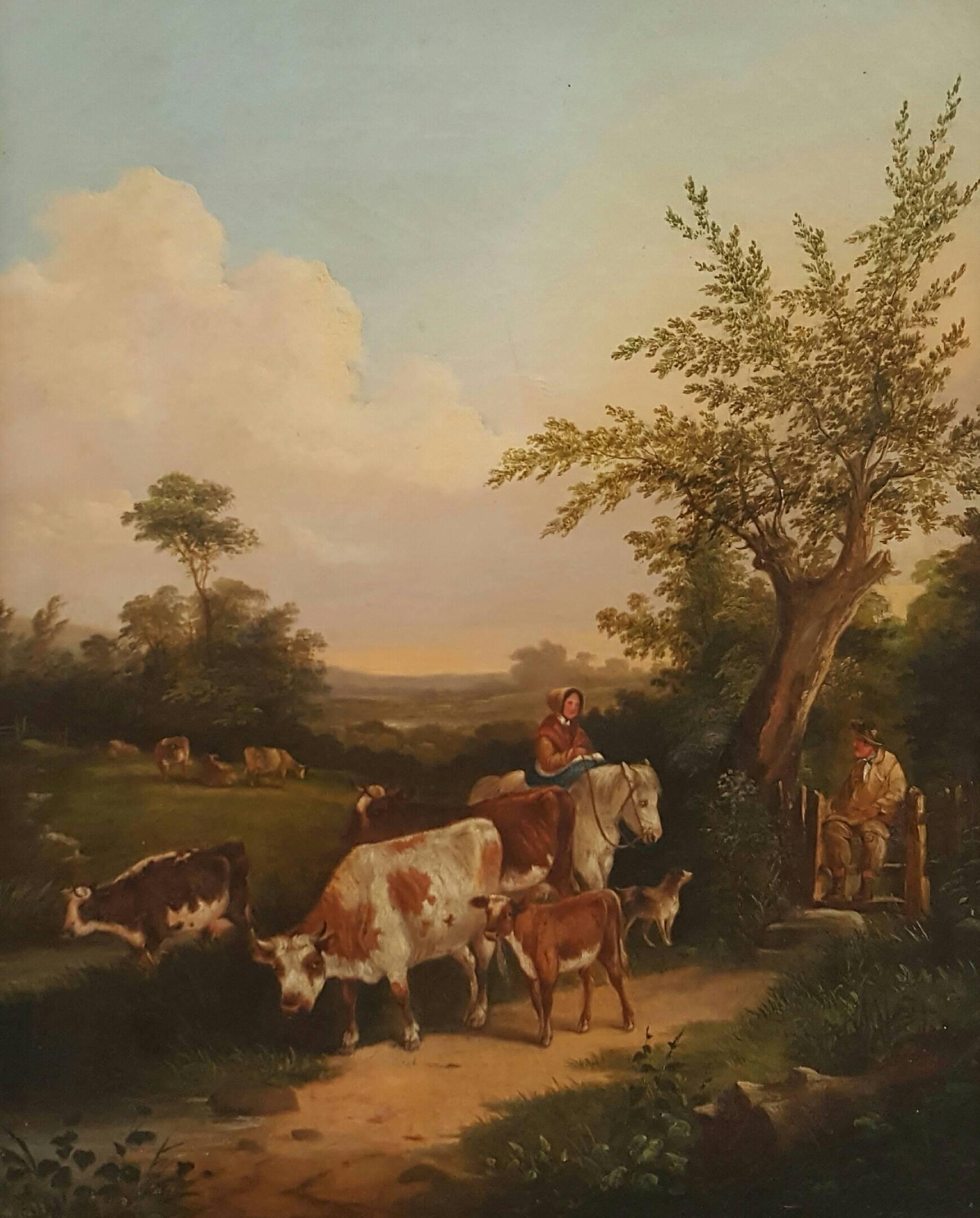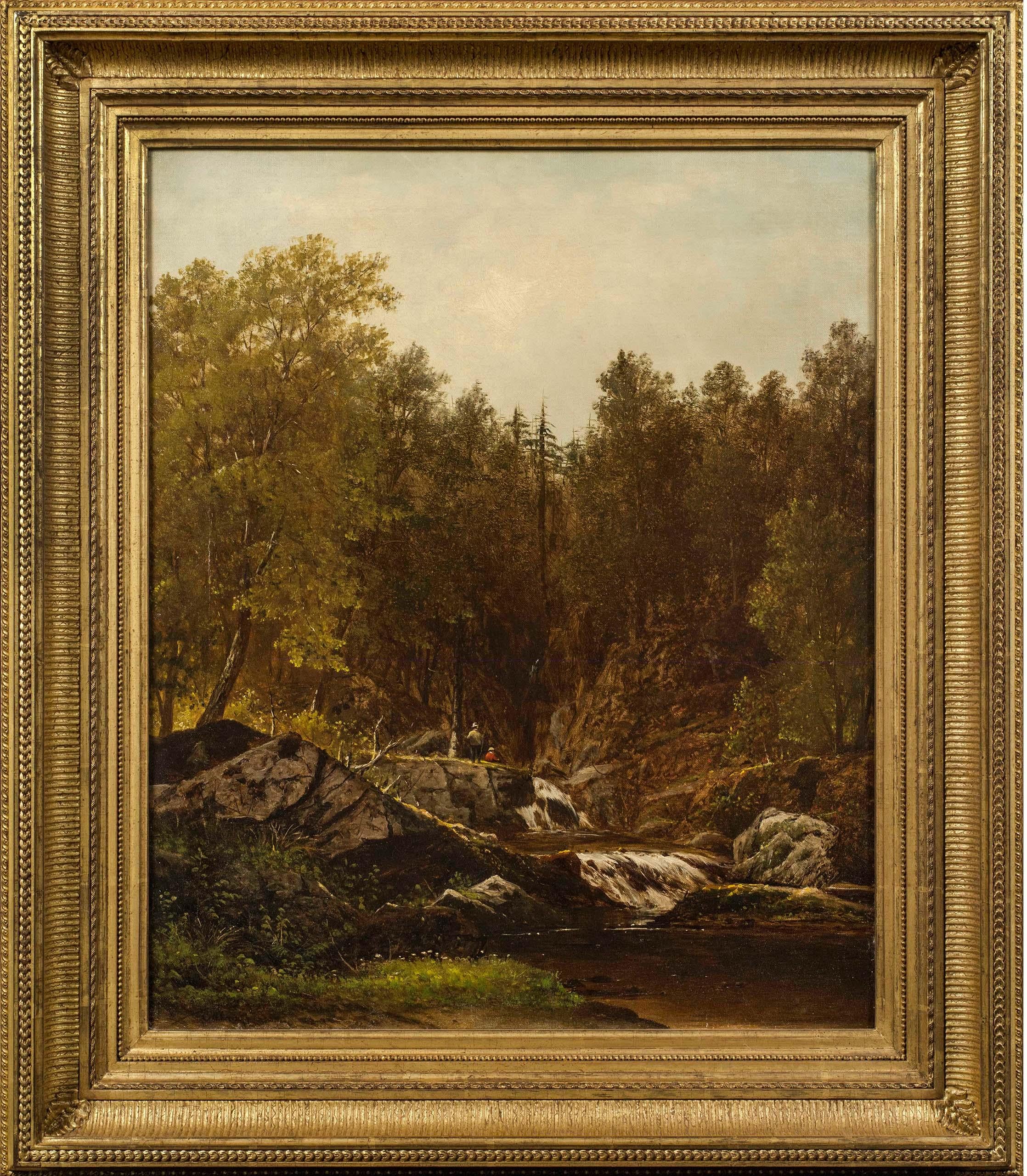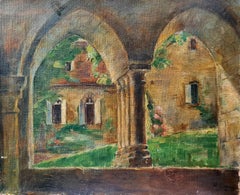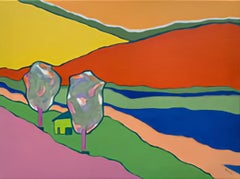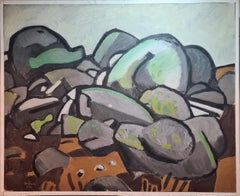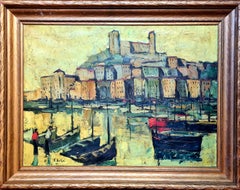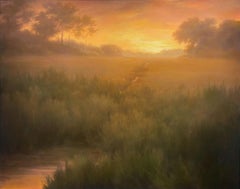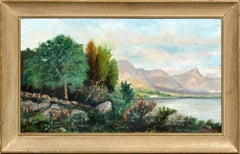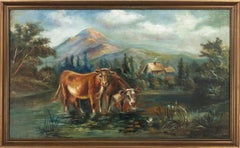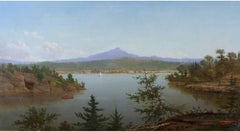Items Similar to Hudson River School Large American Impressionist Landscape Wisconsin in the Snow
Video Loading
Want more images or videos?
Request additional images or videos from the seller
1 of 18
Leroy Ferdinand JonasHudson River School Large American Impressionist Landscape Wisconsin in the Snow1926
1926
About the Item
A large scale American Hudson River School Impressionist landscape of a snow scene, most probably Wisconsin, by Leroy Ferdinand Jonas. The painting is signed and dated bottom right and presented in a fine gilt frame.
An imposing view of a snowy landscape most probably the artist's native Wisconsin. Jonas has captured the grandeur of the scene with the contrast between the thick lush snow and the rich colours of the foliage and leaves on the trees. His impasto technique is very characteristic of the American Impressionists as is the subject and sense of scale. A really beautiful painting which because of its scale would be a statement piece in any room.
LeRoy Jonas was born in the town of Texas, Marathon County, Wisconsin, on April 18, 1897, son of Johann F. and Marie (Borchardt) Jonas. He was educated in Wausau public schools and attended the Chicago Art Institute, where he studied under John Norton, noted for his murals, Leopold Seifert, noted for his portraits, and William Wilmovsky, a landscape artist. He worked as a commercial artist and Conservator of Fine Arts there. Upon graduating, he painted for a while in Door County, Wisconsin and was then awarded a scholarship to study under Leon Lundmark, one of the most noted marine painters of his day. He worked with him in Portland, Maine, and on the shores of Lake Superior. After World War I, Jonas returned to Wausau to concentrate on painting his favourite scenes, the North Woods and Lake Superior. He also taught art for seven years in vocational schools in Wausau and Stevens Point. Countless of his paintings are found in private collections throughout the state and the country. In 1934 he painted an 8 by 18 foot lumberjack mural for the old Wausau City Hall. Jonas also painted Indian scenes in Wausau East High School and he also painted a noted portrait of Silas B. Tobey.
The Hudson River School was a mid-19th-century American art movement embodied by a group of landscape painters whose aesthetic vision was influenced by Romanticism. Early on, the paintings typically depicted the Hudson River Valley and the surrounding area, including the Catskill, Adirondack, and White Mountains.
Works by second-generation artists expanded to include other locales in New England, the Maritimes, the American West, and South America.
American Impressionism was a style of painting related to European Impressionism and practiced by American artists in the United States from the mid-nineteenth century through the beginning of the twentieth. The style is characterized by loose brushwork and vivid colours with a wide array of subject matters but focusing on landscapes and upper-class domestic life.
Impressionism emerged as an artistic style in France in the 1860s. Major exhibitions of French impressionist works in Boston and New York in the 1880s introduced the style to the American public. The first exhibit took place in 1886 in New York and was presented by the American Art Association and organized by Paul Durand-Ruel. Some of the first American artists to paint in an impressionistic mode, such as Theodore Robinson and Mary Cassatt, did so in the late 1880s after visiting France and meeting with artists such as Claude Monet. Others, such as Childe Hassam, took notice of the increasing numbers of French impressionist works at American exhibitions.
Impressionism was initially unpopular in the United States. At the first exhibit in 1886, Americans were attracted to the landscape paintings but were offended by the realist figures and nudity depicted in other paintings. American artists were hesitant to adopt the style of Impressionism while studying in France as it was created as a radical rejection of tradition at the Academy and American artists hoped to gain acceptance through their traditional academy studies. Overtime, American patrons began to accept the abstract forms of Impressionism, especially as American artists, such as Mary Cassatt, began to adopt the styles of French Impressionism.
Unlike early Renaissance painters, American Impressionists favoured asymmetrical composition, cropped figures, and plunging perspectives in their works in order to create a more "impressionist" version of the subject. In addition, American impressionists used pure colour straight from the tubes to make the works more vibrant, used broken brushstrokes, and practiced "impasto"- a style of painting characterized by thick raised strokes. European impressionists painted tranquil scenes of landscapes or the lower and middle classes. American impressionists focused on landscapes like the European impressionists, but unlike their European counterparts, American impressionists also painted scenes of quiet domesticity, in contrast to the emergence of industrialization.
As railroads, automobiles, and other new technology emerged, American impressionists often painted vast landscapes and small towns in an effort to return to nature. Before the invention of collapsible paint tubes artists were often confined to using subjects in their studios or painting from memory. With the invention of paint tubes in 1841, artists could transport their paint and easily paint in nature.
- Creator:Leroy Ferdinand Jonas (1897 - 1981, American)
- Creation Year:1926
- Dimensions:Height: 34.65 in (88 cm)Width: 41.34 in (105 cm)Depth: 1.78 in (4.5 cm)
- Medium:
- Movement & Style:
- Period:
- Condition:Good overall condition. two areas of old restoration, see photos.
- Gallery Location:Cotignac, FR
- Reference Number:Seller: LG/Jonas/Wisconsin.1stDibs: LU1430212651202
About the Seller
5.0
Platinum Seller
Premium sellers with a 4.7+ rating and 24-hour response times
Established in 2000
1stDibs seller since 2020
239 sales on 1stDibs
Typical response time: <1 hour
- ShippingRetrieving quote...Shipping from: Cotignac, France
- Return Policy
Authenticity Guarantee
In the unlikely event there’s an issue with an item’s authenticity, contact us within 1 year for a full refund. DetailsMoney-Back Guarantee
If your item is not as described, is damaged in transit, or does not arrive, contact us within 7 days for a full refund. Details24-Hour Cancellation
You have a 24-hour grace period in which to reconsider your purchase, with no questions asked.Vetted Professional Sellers
Our world-class sellers must adhere to strict standards for service and quality, maintaining the integrity of our listings.Price-Match Guarantee
If you find that a seller listed the same item for a lower price elsewhere, we’ll match it.Trusted Global Delivery
Our best-in-class carrier network provides specialized shipping options worldwide, including custom delivery.More From This Seller
View AllFrench Impressionist Oil on Canvas Painting, In a Monastery Garden
Located in Cotignac, FR
Early 20th Century oil on canvas painting of a garden by M Lagrosk. The painting is signed bottom right. Interestingly to the back stretcher there is a trade stamp for 'Montmartre, B...
Category
Early 20th Century Impressionist Landscape Paintings
Materials
Canvas, Oil
Intermezzo 8. Contemporary Abstract Color-Field Landscape. Oil on Canvas.
Located in Cotignac, FR
A contemporary abstract geometric colour field landscape in oil on canvas by Dutch artist Bernadette Van Baarsen. Signed bottom right and signed, dated and titled to the reverse.
H...
Category
21st Century and Contemporary Other Art Style Abstract Paintings
Materials
Canvas, Oil
Large Mid Century French Expressionist Landscape, Les Rochers
Located in Cotignac, FR
Large French Expressionist oil on canvas painting of a rocky landscape by Jean Arène. Signed and dated bottom left. Presented in original white painted wood frame made by the artist....
Category
Mid-20th Century Expressionist Landscape Paintings
Materials
Canvas, Oil
Large French Post Impressionist Oil on Canvas, The Port of Cannes at Crépuscule
By Emmanuel Bellini
Located in Cotignac, FR
Large French Post Impressionist oil on canvas view of the Port of Cannes in the South of France by Moroccan Monegasque painter Emmanuel Bellini. The painting is signed bottom left an...
Category
Mid-20th Century Modern Landscape Paintings
Materials
Canvas, Oil
Mid-Century Futuristic French Cubist Cityscape. Oil and Acrylic on Canvas.
Located in Cotignac, FR
Mid-Century cubist oil and acrylic futuristic cityscape on canvas. Signed bottom right, artist unknown.
Highly colourful and well-composed interpretation of a cityscape of the futur...
Category
Mid-20th Century Cubist Landscape Paintings
Materials
Acrylic, Oil, Canvas
Froid du l'Etang, French Expressionist Oil on Canvas Lake Landscape
Located in Cotignac, FR
Mid 20th Century French Expressionist oil on canvas of a lake in its frozen landscape by Jacques Pinon. The painting is signed bottom right and is titled on the stretcher and signed to the back of the canvas.
Pinon was noted as an artist in various mediums as well as painting, including tapestry and stained glass. His appreciation of colours and forms are very evident in this painting where he has captured a winter landscape but with subtle colours and forms giving movement and a jewel like feeling to the composition. The cold frosty light of the day animating a rural landscape, his use of layers of colour against raw canvas giving the feeling of the glassy lake.
Jacques Pinon was a 'Renaissance Man', accomplished in many aspects of art and literature. he painted, worked in stained glass as well as sculpture and tapestry - he studied and worked at the National School of Decorative Art of Aubusson. He was also a poet and published writer.
“All the forms of expression of the artist Jacques Pinon are brought together. A journey of fabulous encounters for this artist, his work is impressive, not to mention his work in collaboration with very great artists."
Pinon exhibited extensively and internationally including a major exhibition in PARIS in 1954. “JAZZ.HOT” alongside Dali – Courtaud – (les) Delaunays – Dubuffet – Duffy – Leger and Mondrian.
He also an exhibited at the Museum of Modern Art – Sacred Art Salon in 1960 in PARIS, at the Salomon Guggenheim Museum in New York and the Foundation Royaumont.
His tapestries were exhibited in France in 1969 in the city of Lyon at the Galerie Verrières with GilioliI and Lurcat.
His painting and sculpture are at the crossroads of several universes. Lively and luminous like a Corrida afternoon, the light reminds us of the work the artist did for the stained glass windows, he plays with both using different techniques and styles and his thirst for discovering new forms of expression.
He came from a noted family of artist and artisans. His great-uncle was Alfred de Musset; his great-grandfather and his grandfather both Courtots from the Gobelins factory in Paris, and his family were all friends of Rodin.
In 1952, his meeting with the architect Le Corbusier was a close collaboration around projects carried out with Lucien Herve...
Category
1970s Abstract Expressionist Landscape Paintings
Materials
Canvas, Oil
You May Also Like
Evocation (Hudson River School Landscape Oil Painting of Sunset, Framed)
By Jane Bloodgood-Abrams
Located in Hudson, NY
Hudson River School inspired landscape painting of sunset with orange glow
“Evocation” painted by Jane Bloodgood-Abrams in 2014
oil on canvas
48 x 60 inches / 49.25 x 61.5 inches wi...
Category
2010s Hudson River School Landscape Paintings
Materials
Canvas, Oil
Mountain Lake Landscape
By Joseph Kleitsch
Located in Soquel, CA
Southern California Lake. Signed "J Kleitsch," which could possibly be by Joseph Kleitsch. Oil on canvas in a period giltwood frame. Image size, 16"H x 28"L.
Joseph Kleitsch was c...
Category
1920s Hudson River School Landscape Paintings
Materials
Canvas, Oil, Stretcher Bars
Large Scale Early 20th Century Bucolic Mt. Hood Landscape Oil Painting
By William M. Lemos
Located in Soquel, CA
Gorgeous landscape with two cows drinking water in a pond with Mt. Hood in background by listed artist William M. Lemos (American, 1861-1942). Signed "W.M. Lemos" lower right. Presented in vintage gilt-toned frame that shows wear (included as-is). Condition: Good: previously owned and used, with little or no signs of wear and is in good condition. No structural issues. Image size: 29"H x 49"W.
Born in New York, Professor Lemos moved to San Francisco in 1887 where he established a studio at 106 Geary Street. He later moved to Santa Cruz in 1896, where he settled, painting murals for many local businessmen and the Santa Cruz Beach Boardwalk.
As a boy Lemos earned money by wandering the streets and painting on request. Arriving in San Francisco in 1887, he established a studio at 106 Geary. With his wife Mabel, he worked in Los Angeles for a few years in the 1890s. After settling in Santa Cruz in 1896, he painted murals for many local businessmen. When the original Beach Casino was built there at the Boardwalk in 1904, Lemos was the first concessionaire and worked there for nearly 40 years. On his platform in the Casino, Lemos did paintings of redwoods, still lifes, forest fires, beach scenes, and marines. Many of his oils were done on redwood slabs which were popular with the tourists; in the early days these paintings sold for one dollar and up depending on the size of the work. After his vision failed and he was unable to paint, his last years were mostly spent fishing off the Municipal Pier with a friend who baited his hook for him because he could no longer see. In the March 27, 1941 Santa Cruz Sentinel News Lemos reminisced, "Them were the days when the Boardwalk was only twelve feet long and when business got slow I picked up my shotgun and went across the street and shot ducks where the Casa del Rey Hotel now stands." Exhibited: Calif. State Fair, 1885; Mechanics' Inst. (SF), 1889. In: Santa Cruz City Museum; Wawona Hotel (Yosemite).
Edan Hughes, "Artists in California, 1786-1940"
His mother was Julia Lemos, a Chicago artist famous for her depiction of the Chicago fire, “Two of Julia’s children became successful artists. Her eldest son, William, was a naïve still life, landscape, and mural painter. As a young boy in New York, he would wander the streets, earning money for the family, by ‘painting on request.’ At age 26, William moved to San Francisco, California. He opened an art studio and kept it running until he moved to Santa Cruz with his wife, Mabel, in 1896. During this period, he worked as a fresco artist painting ‘murals for many local businessmen.’
Exhibited California State Fair, Sacramento, 32nd annual, per Sacramento Daily Union, September 9, 1885. and article goes on to say “William Lemos and wife, Sacramento – Art school exhibits in which are shown such a variety of designs in decorative art, flower painting, and ornamentation, that one must give time to the examination.”
Exhibited Mechanics Institute, San Francisco, 1889.
“Lemos and his wife were in Fresno California 1890...
Category
Early 20th Century Hudson River School Landscape Paintings
Materials
Canvas, Oil, Stretcher Bars
Lake in the Mountains
By Daniel Folger Bigelow
Located in New York, NY
Signed and dated lower left: D. F. Bigelow / 70
Category
19th Century Hudson River School Landscape Paintings
Materials
Canvas, Oil
Walking Along a Rocky Shore
Located in Fredericksburg, VA
With masterful precision and a keen eye for atmosphere, Frederic Rondel captures the rugged beauty of the coastline in Walking Along a Rocky Shore. The painting depicts a windswept s...
Category
Mid-19th Century Hudson River School Landscape Paintings
Materials
Canvas, Oil
Through the Woods by Hudson River School Artist William Ongley (1836-1890)
By William Ongley
Located in New York, NY
Painted by Hudson River School artist William Ongley, "Through the Woods" is oil on canvas and measures 14 x 10 inches. The painting is signed by Ongley at the lower right. The work ...
Category
19th Century Hudson River School Landscape Paintings
Materials
Canvas, Oil
Recently Viewed
View AllMore Ways To Browse
Traditional Large Art Piece
Early American Door
Large Automobile Art
Antique School Doors
1860s American
Early 19th Century American Portrait Paintings
Portrait Of Ferdinand
American School Oil Portrait 19th
Hudson Valley Antique
French School Large 19th Century Portrait
Indian Painted Door
Large 19th Century French Painted Doors
Antique Railroad Signs
Hudson River Valley School Painting
Adirondack Wood Frame
Maine Marine Painting
19th Century Indian Door
Mary Robinson
